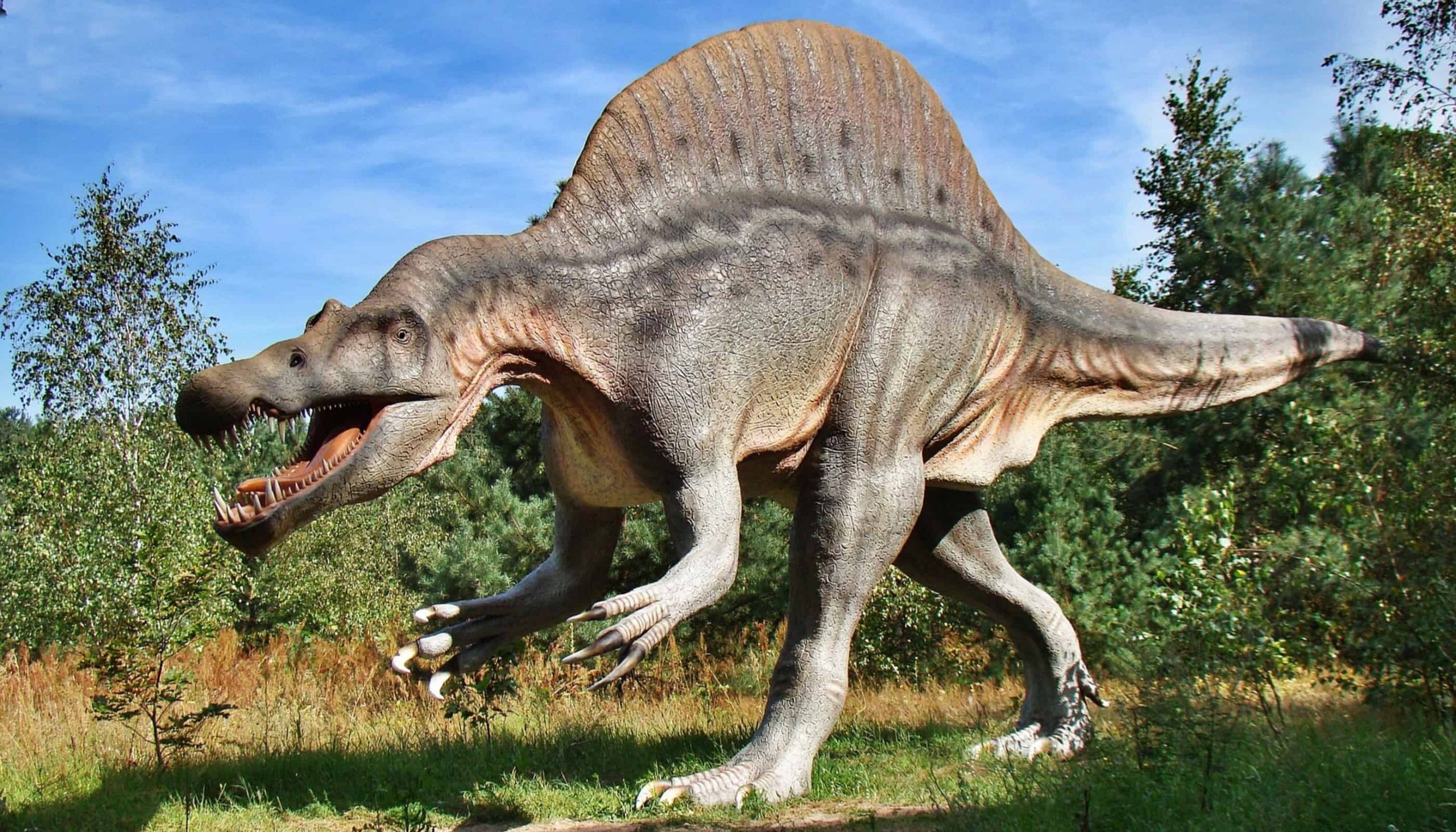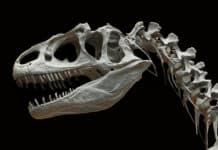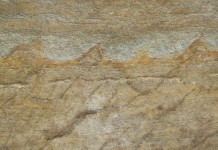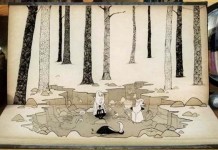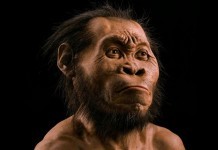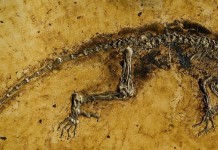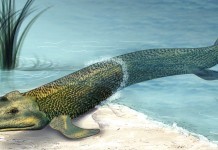Tole je ena najbolj neverjetnih znanstvenih zgodb, kar sem jih kdaj prebral. Doktorski študent na Univerzi v Kansasu Robert DePalma je kot kaže odkril najdišče, ki kaže potek zadnjega dneva obstoja dinozavrov na Zemlji. Že samo odkritje je epohalno, poleg tega se zdi, da je Robert DePalma karakter posebne sorte. (In med drugim tudi bratranec režiserja Briana DePalme. Življenje je res polno nenavadnih povezav…)
Tule je izsek iz zapisa na news.berkeley.edu, ki na kratko opiše pomen odkritja (čeprav, razumljivo, s precejšnjim poudarkom na paleontologih povezanih z UC Berkeley):
“The beginning of the end started with violent shaking that raised giant waves in the waters of an inland sea in what is now North Dakota.
Then, tiny glass beads began to fall like birdshot from the heavens. The rain of glass was so heavy it may have set fire to much of the vegetation on land. In the water, fish struggled to breathe as the beads clogged their gills.
The heaving sea turned into a 30-foot wall of water when it reached the mouth of a river, tossing hundreds, if not thousands, of fresh-water fish — sturgeon and paddlefish — onto a sand bar and temporarily reversing the flow of the river. Stranded by the receding water, the fish were pelted by glass beads up to 5 millimeters in diameter, some burying themselves inches deep in the mud. The torrent of rocks, like fine sand, and small glass beads continued for another 10 to 20 minutes before a second large wave inundated the shore and covered the fish with gravel, sand and fine sediment, sealing them from the world for 66 million years.
This unique, fossilized graveyard — fish stacked one atop another and mixed in with burned tree trunks, conifer branches, dead mammals, mosasaur bones, insects, the partial carcass of a Triceratops, marine microorganisms called dinoflagellates and snail-like marine cephalopods called ammonites — was unearthed by paleontologist Robert DePalma over the past six years in the Hell Creek Formation, not far from Bowman, North Dakota. The evidence confirms a suspicion that nagged at DePalma in his first digging season during the summer of 2013 — that this was a killing field laid down soon after the asteroid impact that eventually led to the extinction of all ground-dwelling dinosaurs. The impact at the end of the Cretaceous Period, the so-called K-T boundary, exterminated 75 percent of life on Earth.
“This is the first mass death assemblage of large organisms anyone has found associated with the K-T boundary,” said DePalma, curator of paleontology at the Palm Beach Museum of Natural History in Florida and a doctoral student at the University of Kansas. “At no other K-T boundary section on Earth can you find such a collection consisting of a large number of species representing different ages of organisms and different stages of life, all of which died at the same time, on the same day.””
Članek v Newyorker-ju je v veliki meri o DePalmi, z veliko ozadja, pa tudi bolj podrobno razdelano znanostjo. Čeprav je članek dolg, je vreden branja. Nekaj izsekov:
“Sixty hours later, the asteroid hit. The air in front was compressed and violently heated, and it blasted a hole through the atmosphere, generating a supersonic shock wave. The asteroid struck a shallow sea where the Yucatán peninsula is today. In that moment, the Cretaceous period ended and the Paleogene period began.«
»About seventy-five per cent of all species went extinct. More than 99.9999 per cent of all living organisms on Earth died, and the carbon cycle came to a halt.«
»One of the central mysteries of paleontology is the so-called “three-metre problem.” In a century and a half of assiduous searching, almost no dinosaur remains have been found in the layers three metres, or about nine feet, below the KT boundary, a depth representing many thousands of years.«
»On August 5, 2013, I received an e-mail from a graduate student named Robert DePalma. I had never met DePalma, but we had corresponded on paleontological matters for years, ever since he had read a novel I’d written that centered on the discovery of a fossilized Tyrannosaurus rex killed by the KT impact. “I have made an incredible and unprecedented discovery,” he wrote me, from a truck stop in Bowman, North Dakota. “It is extremely confidential and only three others know of it at the moment, all of them close colleagues.” He went on, “It is far more unique and far rarer than any simple dinosaur discovery. I would prefer not outlining the details via e-mail, if possible.” He gave me his cell-phone number and a time to call.
I called, and he told me that he had discovered a site like the one I’d imagined in my novel, which contained, among other things, direct victims of the catastrophe. At first, I was skeptical. DePalma was a scientific nobody, a Ph.D. candidate at the University of Kansas, and he said that he had found the site with no institutional backing and no collaborators. I thought that he was likely exaggerating, or that he might even be crazy.«
»Today, DePalma, now thirty-seven, is still working toward his Ph.D. He holds the unpaid position of curator of vertebrate paleontology at the Palm Beach Museum of Natural History, a nascent and struggling museum with no exhibition space.«
»DePalma knew that a screwup with this site would probably end his career, and that his status in the field was so uncertain that he needed to fortify the find against potential criticism. He had already experienced harsh judgment when, in 2015, he published a paper on a new species of dinosaur called a Dakotaraptor, and mistakenly inserted a fossil turtle bone in the reconstruction.«
»For five years, DePalma continued excavations at the site. He quietly shared his findings with a half-dozen luminaries in the field of KT studies, including Walter Alvarez, and enlisted their help.«

